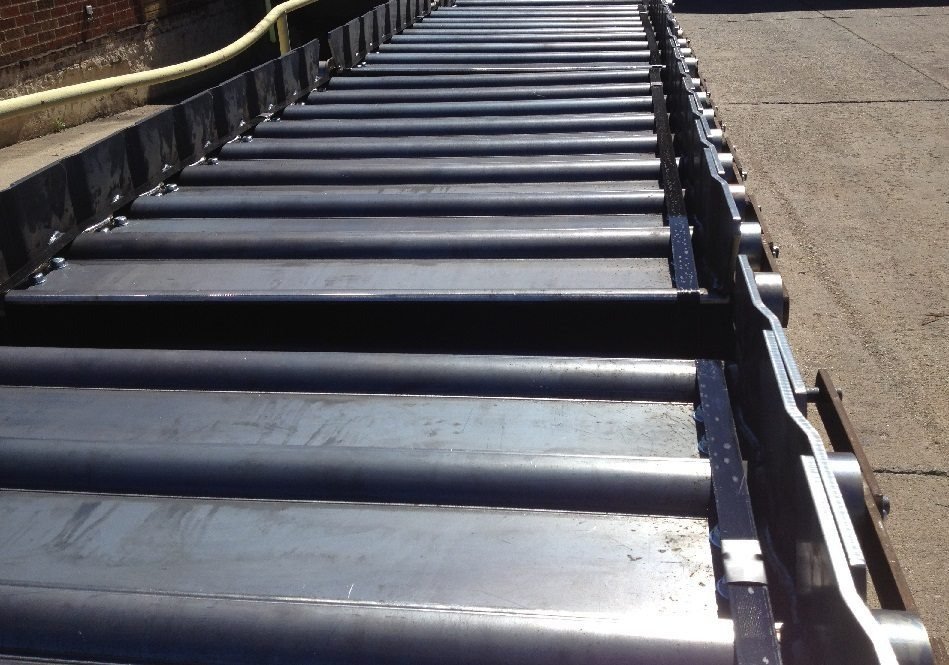Among the wide variety of conveyor solutions available today, the metal conveyor belt stands out for its impressive durability and long-term reliability. Built from high-strength materials and designed to withstand extreme conditions, this type of belt offers both performance and value over time. In this article, we explore what makes metal conveyor belts so durable and why industries continue to rely on them for critical operations.
Understanding Metal Conveyor Belts
Before discussing durability, it’s important to understand what a metal conveyor belt is. Unlike plastic or fabric alternatives, metal belts are typically made from stainless steel, carbon steel, or other metal alloys. These belts are used in high-temperature processes, cleanroom environments, heavy-load applications, and settings where hygiene, strength, or precision are essential.
Their structural integrity and adaptability are why industries such as automotive, electronics, baking, and pharmaceuticals often choose metal belts over traditional ones.
Material Strength That Withstands Time
The primary reason for the longevity of metal conveyor belts lies in the materials themselves. Metals such as stainless steel are well known for their strength, corrosion resistance, and thermal tolerance.
Unlike fabric or plastic belts, which can fray, warp, or crack under pressure, a metal conveyor belt maintains its structure even in harsh environments. This durability results in fewer replacements, reduced maintenance costs, and less downtime, making it a cost-effective solution in the long term.
Resistance to Corrosion and Wear
Corrosion is a common cause of belt failure, especially in industries that involve water, steam, or chemicals. Metal conveyor belts are ideal for applications in food processing, chemical manufacturing, and pharmaceuticals, where cleanliness and chemical exposure are routine concerns.
Wear resistance is another key advantage. Conveyor systems involve constant motion and friction. A metal conveyor belt resists wear far better than belts made from synthetic materials. It can endure abrasive products, heavy loads, and repeated mechanical actions over long periods without compromising performance or safety.
Built for High Temperatures and Harsh Environments
In high-temperature environments, traditional belt materials often fail. Plastic melts or deforms; fabric belts may shrink or deteriorate. Metal, on the other hand, can withstand extreme heat and cold, making it invaluable in industrial ovens, freezing tunnels, or metal processing facilities.
A metal conveyor belt retains its strength and shape at temperatures well above 538°C (1,000°F). Its resistance to thermal expansion and breakdown ensures smooth operation even in the most demanding conditions. This minimises the need for cooling periods or frequent material changes—contributing to overall productivity.
Minimal Stretching and Deformation
One of the key mechanical benefits of metal belts is their ability to maintain shape and dimensions under load. Plastic belts may stretch over time, causing slipping, tracking issues, or uneven material flow. A metal conveyor belt, however, has minimal elongation under tension, helping to maintain alignment and mechanical stability.
This dimensional stability ensures consistent performance, efficient product handling, and reduced wear on machinery. It also simplifies maintenance, as re-tensioning and realignment are needed less frequently.
Precision Engineering and Construction
Another factor contributing to the durability of metal belts is the precision of their engineering. These belts are manufactured to tight tolerances. Whether woven, perforated, or constructed from flat wire, the methods used ensure uniform quality and strength throughout the belt.
This precision minimises weak points that could lead to early failure. It also ensures proper interfacing with drive systems, rollers, and guides—extending the lifespan of both the belt and the entire conveyor system.
Hygienic and Easy to Clean
The non-porous surface of a metal conveyor belt makes it ideal for such environments.
Cleaning is faster and more efficient. With fewer areas for contaminants to hide and the ability to endure steam and chemical sanitation, metal belts help maintain compliance while extending belt life.
Repairability and Reusability
Unlike rubber or plastic belts that require full replacement when damaged, a metal belt section can often be removed or replaced without discarding the entire system. This adaptability reduces waste and enhances cost efficiency.
Furthermore, because metal belts can be customised in terms of width, pitch, and style, they are often repurposed for other systems or processes as operational needs evolve.
Environmental Benefits and Sustainability
The extended lifespan of a metal conveyor belt results in less frequent disposal, reduced replacement needs, and lower environmental impact. Additionally, metal belts are recyclable, which decreases the ecological footprint associated with conveyor system upgrades.
As sustainability reporting and lifecycle assessments become more important, the recyclability and durability of metal belts present major advantages.
Conclusion: Why Metal Conveyor Belts Are Built to Last
Whether your priority is heat resistance, mechanical reliability, hygiene, or sustainability, metal conveyor belts consistently outperform alternative options.
Wirebelt, a recognised name in conveyor technology, continues to develop and deliver high-performance metal conveyor belt solutions that meet the rigorous demands of modern industry. When your application requires durability, consistency, and long-term value, a metal belt system backed by Wirebelt’s trusted expertise is an excellent choice.
